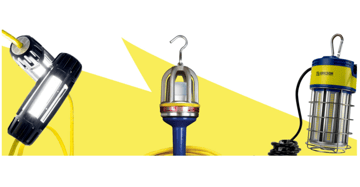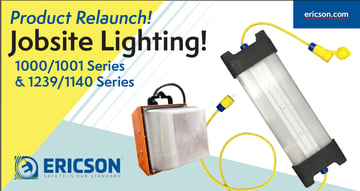Learn why wire mesh strain relief is crucial for ensuring the safety and longevity of portable cords in various applications.
Understanding Wire Mesh Strain Relief
Wire mesh strain relief plays a critical role in protecting portable cords and wire conductors from harmful stress. When cables are pulled or subjected to lateral strain, the wire mesh helps distribute the load evenly, preventing excessive stress on the conductors.
By understanding how wire mesh strain relief works, you can ensure the proper installation and use of portable cords in various applications.
Benefits of Wire Mesh in Portable Cord Applications
Wire mesh offers several benefits when used in portable cord applications. First and foremost, it provides a reliable strain relief mechanism, reducing the risk of cable damage and failure from excess strain. Wire mesh acts as a protective barrier, shielding the conductors from external forces that can cause stress and jacket deformation.
Wire mesh strain relief also ensures that portable cord is not bent at severe angles potentially pinching or severing cord jacket. The mesh structure allows for easy bending and flexing without compromising the integrity of the conductors. This makes portable cords with wire mesh strain relief ideal for applications that require frequent movement and flexing.
Most important, wire mesh strain relief improves the overall safety of portable cords. By preventing excessive stress on the conductors, it reduces the likelihood of electrical faults, short circuits, and other hazards. This is especially important in environments where electrical equipment is exposed to harsh conditions or heavy usage.
Overall, the use of wire mesh strain relief in portable cord applications ensures reliable and long-lasting performance while prioritizing safety and protection.
Common Issues Without Wire Mesh Strain Relief
Without wire mesh strain relief, portable cords are more susceptible to various issues that can compromise their performance and safety. One common issue is cable pulling stress. When cables are pulled without proper strain relief, the conductors can experience excessive tension, leading to stretching, deformation, or even breakage.
Another issue is lateral strain on the conductors. Without the support of wire mesh, the conductors are more vulnerable to lateral forces that can cause them to shift or bend, potentially damaging the insulation and leading to electrical faults.
In summary, the lack of wire mesh strain relief in portable cord applications can result in cable pulling stress, lateral strain on conductors, decreased flexibility, and reduced durability, all of which can negatively impact the performance and safety of the cords.
Choosing the Right Wire Mesh Strain Relief for Your Needs
When selecting wire mesh strain relief for your portable cords, it's important to consider your specific needs and requirements. Here are some factors to consider:
- Cord diameter: Choose a strain relief that matches the diameter of your cord to ensure a proper fit and grip.
- Material compatibility: Consider the material of the cord and choose a strain relief that is compatible to avoid any chemical reactions or degradation.
- Environmental conditions: If the cord will be exposed to harsh conditions such as extreme temperatures or chemicals, choose a strain relief that is designed to withstand those conditions.
- Eye type - depending on how you are supporting your cables or hoses, you may want a different style of eye (the part you hang the grip from). There are several different styles of eyes, specific to each application.
- Whether either or both ends are available to install a grip. If the ends of the cables or hoses are available - new installation, you would use a standard closed mesh style. If not, there are split mesh grips used for cables that are already installed and in need of support. Split mesh grips wrap around the cable, like a jacket, and are either laced (using material similar to the grip weave) and laced like a shoe or rod closing, using a rod with a angled end to loop back and forth, pulling the weave together, nearly like a closed mesh grip.
Selecting right grip for your application - Types and intended use:
- Wire Mesh strain relief is segmented into distinct categories based on their application - Pulling. Supporting and Sealing with support. There are also I-grips, used for cords with plugs and connectors.
- Wire Pulling - Often wire mesh is used for single or multiple conductors through conduit above or under ground. It is also used in utility applications where conductors are pulled for great distances requiring exceptional breaking strength. Pulling grips, when properly cared for, can be reused several time. There are also grips for pulling communication cables and fiber optic cables whose jackets are less robust.
- Supporting - These grips are designed to support cord and cables in horizontal and vertical applications, relieving stress from fittings above and below. The come various sized with different supporting eyes, depending on applications. As mentioned above, if a grip is required for an already installed cable or hose, using a split mesh style, eliminates the need to disassemble an already installed cable and install a closed mesh style grip.
- Sealing Grips - These grips are used for cords exiting or entering enclosures. Indoor grips, sometimes called Wide Range Grips, offer dust and moisture seals while watertight grips, referred to as Deluxe Wire Mesh Strain Relief offer a watertight seal. Both styles are used to prevent cord from being pulled out from and enclosure while offering Arc of Bend protection if the cords and cables are stressed laterally.
- I-Grips - named because they look like the letter I, these are used with plugs and connectors to add additional support to the plug or connector from pull out and provide arc of bend protection (lateral stress on the cord).
Although I've spoken mostly about supporting electrical cables, these grips can be used in hose applications as well. Whether, pneumatic, hydraulic or liquid hoses, wire mesh strain relief can be used in these applications to relieve stress or manage cables as well.
The key to any wire mesh strain relief application is ensuring the cables and hoses are relieved from undue stress at the connection point, while protecting vertical and lateral loads. Look for a wire mesh strain relief that meets all safety standards and compliance and offer sufficient flexibility and durability to withstand the intended application, especially if frequent movement or flexing is required.
Brian Earl
Hailing from Minnesota originally, Brian began his secondary education at the University of Minnesota with his undergraduate work and his MBA in Management at University of Michigan, focusing on strategic marketing and market planning. He has an extensive background in developing and leading a variety of marketing,...
More from the blog
View All Posts
Certifications and Regulations
6 min read
| December 14, 2021
Safe & Compliant Jobsite Lighting
Read More
Workplace Safety
2 min read
| June 12, 2024
Protecting Workers and Cords From Harm, Safety Through Compliance
Read More
New Product Launch
3 min read
| March 21, 2024
Industrial LED Highbay and Wide Area Jobsite Lighting Solutions
Read MoreSubscribe to blog updates
Stay up-to-date on what's happening at this blog and get additional content about the benefits of subscribing.
